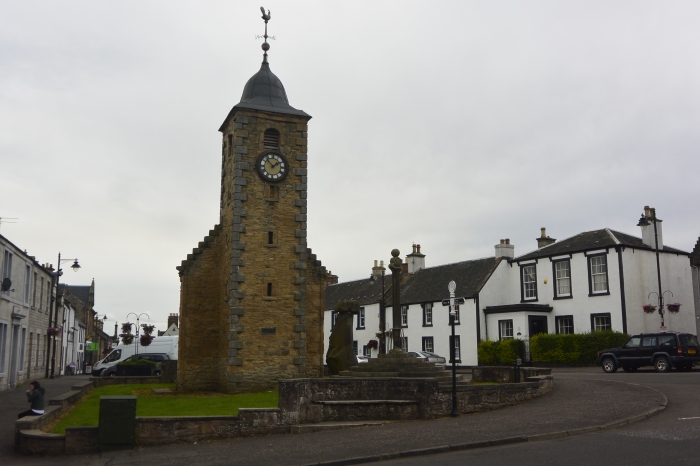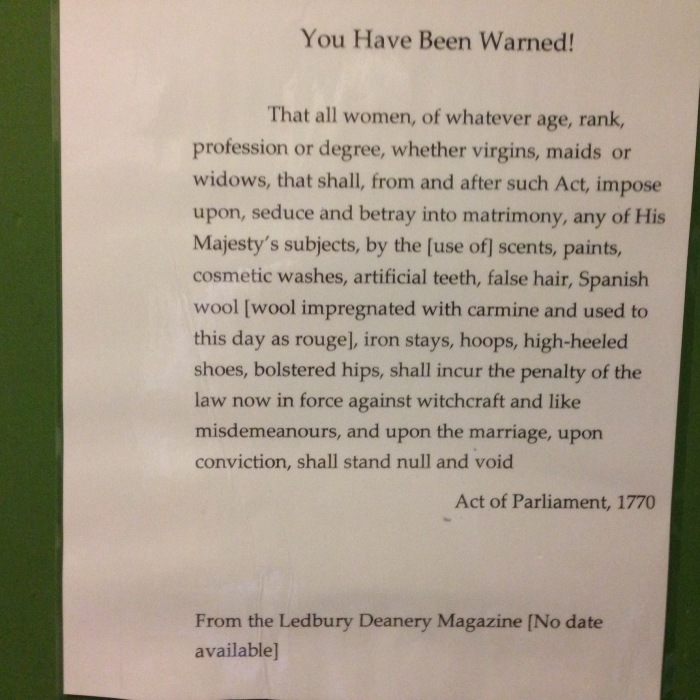Two Towers

A four mile circular walk between two towers – Clackmannan and Alloa – starts at Clackmannan Tollbooth. This was built in 1592 as a court, prison and administrative centre, but only the west gable and bell-tower now remain. Next to it, you can see a boulder sitting on top of another boulder – this is what gives the town its name. It’s the “Clack” or Stone of Mannan, named after the Celtic God Manau, which started life to the south of the town before being moved to Clackmannan Tower and then to the Tolbooth in 1833. Next to that is the shaft of the Mercat Cross which dates back to the 1600s and still shows signs of wear from the chains of prisoners who were attached to it as punishment. The ball finial was added in 1897 to mark Queen Victoria’s Diamond Jubilee.
After admiring this rather odd collection of structures, we headed out of town to Clackmannan Tower, the oldest parts of which date to 1359. It suffered subsidence and partial collapse because of mine-workings in the 1940s, but Historic Scotland has repaired it. It’s only open occasionally though, and this was one of the days it had to be admired from outside.
The hill on which it is perched has contrasting views to either side – one way to flat farmland running down to the Forth; the other to the Ochil Hills – and a lot of cows.
Continuing along the hillside, Alloa came into view and we descended through trees to a small burn.
After we crossed the bridge, the next part of the walk was through a residential area as the town has now surrounded the Tower.
This is one of Scotland’s largest surviving medieval tower houses, the ancestral home of the Earls of Mar from around 1368. It has a very surprising interior though. If you enlarge the pictures above, you might be able to see the lines of previous extensions. A mansion was attached to the tower in 1680 and the 6th Earl renovated the house in the early 1700s, inspired by the elegant villas he had seen on his Grand Tour of Europe. The mansion burnt down in 1800 and was rebuilt 38 years later. It then fell into ruin and was eventually pulled down around 1960. The tower was left derelict until 1988 when Clackmannanshire Council set up a preservation trust under National Trust for Scotland supervision to restore it and it was opened to the public in 1996. Unfortunately, though, photography is not allowed inside so you will have to take my word for it that the interior is much more elegant than the exterior suggests – or see the pictures on the NTS site. I did use my phone to take this photo in the Ladies though – the message amused me!

One place you can take pictures is from the roof of the Tower, from which we could see back to Clackmannan Tower where we started.
Our route back took us across the flat ground near the river which we had spied from above at the beginning of the walk. This is the Black Devon Wetland nature reserve – the Black Devon being a river running into the Forth. To start with, we had a row of pylons to guide us, then we veered off across farm tracks back to Clackmannan.
I’m linking this post to Jo’s Monday Walks. She’s following mountain goats this week and her other contributors have been all over the place! Check the link for some great posts.

























![Top-20-Travel-Blogs-200×150[1]](https://i0.wp.com/www.holiday365.co.uk/blog/wp-content/uploads/2012/06/Top-20-Travel-Blogs-200x1501.png)
My favorite images were those of the Alloa Tower. Wish we could have seen inside, but I trust you that it was exquisite. And the words from the 1770 Act of Parliament made me roar!
LikeLike
Yes, well done to the custodians for finding that and putting it up in the Ladies!
LikeLiked by 1 person
Haw much have I missed the Old World with its history scattered everywhere in shape of Towers, ruins and incredible nature! But I certainly am not missing it to the point of giving up my modern woman right to wear artificial teeth and false hair 🙂
LikeLike
No, that would never do!
LikeLiked by 1 person
love the message in the ladies….I’m done for it seems!!
LikeLike
As are most women! On at least one count, if not more.
LikeLiked by 1 person
I’m not saying which ones I’m busted on😉
LikeLiked by 1 person
Yay! My ancestors are from Alva and Tillicoultry, so this is “my” area of Scotland. Can’t wait to get back there (next year, I hope).
LikeLike
Ooh, not far away then!
LikeLike